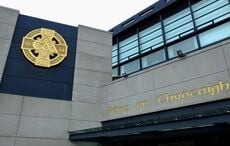The horse carriage controversy in Central Park in New York has now reached the absurd level with a story in The New York Times on Monday outlining efforts to have the horses replaced by fake versions of the original Model T Ford. This proposal was put forward, in all seriousness, by proponents of the ban on horse drawn carriages in the park. It merely fuels the absurdity of this campaign against the horse carriage owners, many of whom are Irish. Amazingly, some politicians appear to be taking the proposal seriously. A horse drawn carriage ride around Central Park has become a New York tradition, and the lines of people who avail of it every day testify to its tourism potential. So many marriages have been made in those carriages, as well as romantic moments and family moments, that it seems utterly absurd that the practice is under fire. Proponents of the ban point to alleged abuse of the horses, but the evidence is exactly to the contrary. Indeed, it would be nigh impossible to hurt one of the horses, so close are they to the public thoroughfare in one of the most traveled parts of New York. Any attempt at abuse would immediately be noticed and reported. The facts are that the owners know better than anyone that a happy and healthy horse is their best ticket to making a good wage. It would be utterly counterproductive for them to punish their most valuable asset in any way. The horses are also allowed to stay home when the temperatures drop too low or soar too high, unlike humans who have to continue to make a living in all temperatures. The incredibly low death rate among the horses who are looked after better than many down on their luck New Yorkers are also a fact that the pro ban groups fail to acknowledge. At the heart of it, of course, is the notion that someone somewhere will take all the horses and give them a good home where they can live free of the burden of working. That defies the reality that horses actually like to work and are wonderful beasts of burden, as they have proven down through the centuries. Some are retired trotter horses that would have ended up in a dog food can if they were not rescued to play their part in the carriage trade. If the horses were not working in Central Park chances are they would be heading for a slaughter house somewhere, especially in this time of economic want. The reality of horse slaughter in this country is very clear. If one attends any racetrack, the weekly visit from the butcher van is a harsh reminder of what lays in store for so many of these gentle creatures who fail to measure up. That is why the Central Park horses have beaten the odds and clearly enjoy what they are doing. There is lots of variety, good food, kind owners and a healthy outdoor job that they clearly relish. To pretend otherwise, and to propose ridiculous solutions such as fake Model T Fords, which would only add to the environmental pollution in New York, is clearly at odds with reality. Our advice to the anti-carriage trade people is to leave the horse and carriage trade alone. It is good for the horses, good for jobs and good for the hundreds of thousands of tourists who avail of a prized trip through Central Park.




Comments